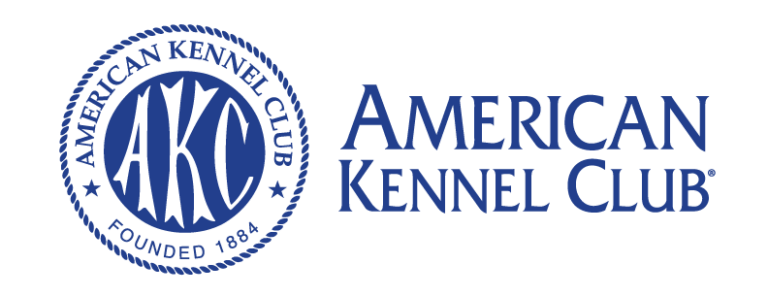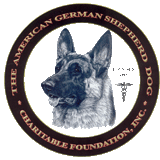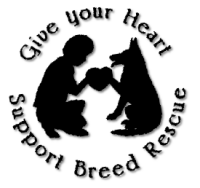With a keen sense of smell – 100,000 times stronger than humans – dogs are often used to find lost people and animals, drugs, avalanche and disaster victims, and even to detect cancer.AKC Tracking is a canine sport that demonstrates a dog’s natural ability to recognize and follow a scent and is the foundation of canine search and rescue work. Unlike obedience and agility trials, where dogs respond to the owner’s< commands, in tracking a dog is completely in charge, for only he knows how to use his nose to find and follow the track.
Getting started in tracking is easy, and you won’t find a more willing participant! A puppy instinctively uses his nose – training your dog to track simply hones his natural ability. And since all dogs have a natural ability to follow a scent, any breed is capable of learning to track.
Tracking requires very little equipment.You just need a harness, a 20-to-40 foot lead, a ew flags to mark your track and an open rassy area free of obstacles such as roads, ditches or woods. There are some great reference books that provide step-by-step instruction to help ou train your dog for tracking.
An AKC tracking test is a simulation of a search and rescue for a lost person.
Tests are outdoors in the country. At the start point, the dog is given an article owned by the “lost” person, then follows the footprints of that person to a glove at the end of the trail. The track, depending on the test level, contains from five to seven turns, may cross obstacles, and is from 300 to 1000 yards long. In the intermediate tests, the dog must also find two personal articles the lost person dropped on the trail, before arriving at the glove at the end.
The tracks are aged from 30 min to two hours for the TD tests and from three to five hours for the TDX tests. After two hours of aging, the TDX tracks are crossed twice by two different cross-track layers, to further challenge the dogs.
Plotting Day – Saturday
Running a tracking test requires a large pool of workers, starting with a team of two judges.
The tracks are walked on the ground by the two judges the day before the test (plotting day). Both judges map the tracks on AKC judging forms as they are plotted. Following the two judges cross country are a stake holder, a stake pounder, the tracklayer, and – for the intermediate (TDX) tracks – one of the pair of cross-track layers. As the tracks are determined, they are staked by the flag carrier and pounder while the tracklayer walks along behind the judges, plotting her own map. The tracklayer may also put in small supplemental markers along the trail in particularly complicated areas.
The cross-track layer carries her own special cross-track flags to mark where she and a partner, walking parallel to each other, will cross the trail in two separate places to try and draw the dog off the primary scent. For TDX tracks, the judges also flag the locations of the intermediate articles and tell the tracklayer exactly which article to drop there.
Either before or after laying the track, the judges examine the personal articles of the TDX tracklayers and pick the two, one leather and one fabric, which will be dropped along the trail.
The Chief Tracklayer gives all the tracklayers for both tests the start bandana and ending glove, which must be throughly scented by the next morning. This is often done by immediately stuffing both bandana and glove in a pocket for the remainder of plotting day and storing them overnight in a hiking boot. All articles for TD and TDX tracks are either leather or fabric.
Once a track is completely marked, the judges pick up another tracklayer, another cross-track layer for TDX tracks, and, accompanied by the stake holder and the pounder, go on to mark the next track.
The first tracklayer then walks her track again, refining her personal map. Some tracklayers will leave the fields and return to the Headquarters area, then come back to the track again some time later to walk it for a third time. For this reason, clubs usually provide one tracklayer per track, for a total of 8 people. Cross-track layers can usually work two tracks each, so only 2 pairs are required.
The next morning (test day), on a pre-determined schedule based on the time required to adequately age each track, the tracklayers walk their tracks, pulling the track flags, dropping the articles and pulling their flags, and picking up any extra markers as they go, leaving only the start flag(s) and – on TDX tracks – the cross-track flags.
The tracklayer drops a pre-scented article at the start of the TD test and a pre-scented glove at the end. The TDX tracklayer drops a start article, two intermediate articles, and the glove on the Intermediate tracks. Once the TDX tracks have aged for two hours, the pair of cross-track layers walk their designated routes, pulling their flags as they pass them.
All of these people are driven to and fro around the tracking site on both days to limit the amount of extraneous scent wafting around the area.
This intricate ballet is coordinated by the Chief Tracklayer in the weeks before the tests. She/he then runs the entire site on both plotting and test days. The Chief Tracklayer combines the organizational skill of an executive secretary; an encyclopedic knowledge of the tracking site; and the get-it-done personality of a drill sergeant.
Meanwhile back at the Hospitality Tent, both a continental breakfast and lunch are available both days for the entire crew and also the exhibitors on test day.
Test Day – Sunday
As explained above, the Chief Tracklayer, Hospitality, the tracklayers and cross-track layers have been at the test site for many hours before the judges and exhibitors arrive.
The Novice Level (TD) tests are run first, as they do not have to be aged as long as the Intermediate (TDX tests). Thirty minutes before the TD test begins, the Test Chair, the Test Secretary, the two judges, the tracklayer, and the exhibitors gather at the Test Headquarters. The Test Chair or Secretary gives a very short welcoming speech, makes administrative announcements, then introduces the Judges. The Judges usually have a few words for the competitors, then The Draw is held. Four identical items, numbered on the bottom, are laying on a small table in front of the judges. In catalog order, the handlers pick (draw) an item. The number on the bottom determines which track they will run.
The handler goes off to get the dog and the judges and tracklayer are driven to the start flag of TD Track #1. The handler may either drive her/his vehicle to the start or be driven by one of the volunteer drivers.
At Track #1, the handler finds two flags: the start flag with a scented bandana on the ground next to it and another flag, thirty yards out in the field. The second flag gives the handler the direction in which the track goes off from the start. The handler puts the dog on the track and, hopefully, the dog puts its nose down, smells the bandana, and goes off down the track. The judges and the tracklayer follow at some distance.
If the dog and handler make it to the end of the track and find the glove, they have passed and titled. If at any point along the track the judges determine that the dog is not “working”, or has gone completely off the track and has no hope of recovering, they will “whistle it off”. Condolences are offered and the judges leave for Track #2. The tracklayer stays behind and the competitor is offered the opportunity to put the dog back on the track, with the tracklayer walking behind, coaching the team through to the end. About 75% of the handlers take advantage of this training opportunity.
When all of the TD tracks are completed and/or the first TDX track has aged for 3 hours, the TDX draw is run in a similar manner to the TD draw. Depending on the judges’ preference, the TDX draw may happen at a scheduled time with or without the judges being present.
At the start of a TDX track, the handler will find one flag with a bandana lying next to it. The trail can continue from the start in any direction within an 180 degree arc.
The handler must give the judges the 2nd and 3rd articles and the glove at the end of the TDX trail to qualify. Missing one of the intermediate articles disqualifies the run, even if the dog made it all the way to the glove.
At the end of the day, once all of the tracks have been run and the judges have completed their paperwork, awards are given to any TD and TDX teams which have titled.






Copyright ©1997- 2024 German Shepherd Dog Club of America, Inc. All Rights Reserved.
Site Designed by DC WEB DESIGNERS, a Washington DC Web Design Company.